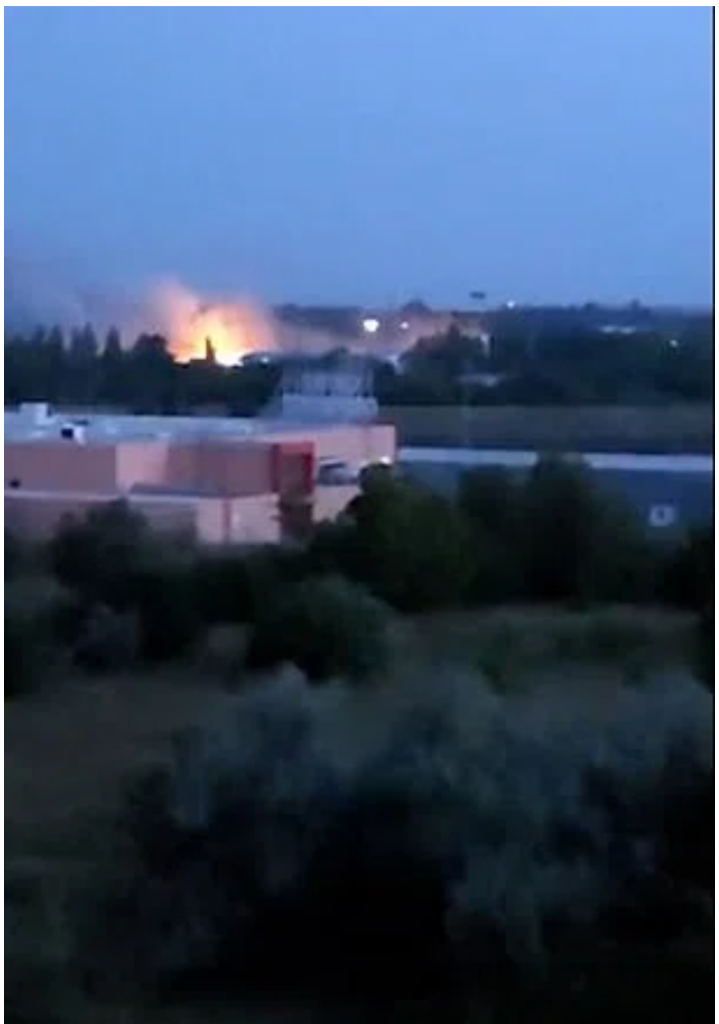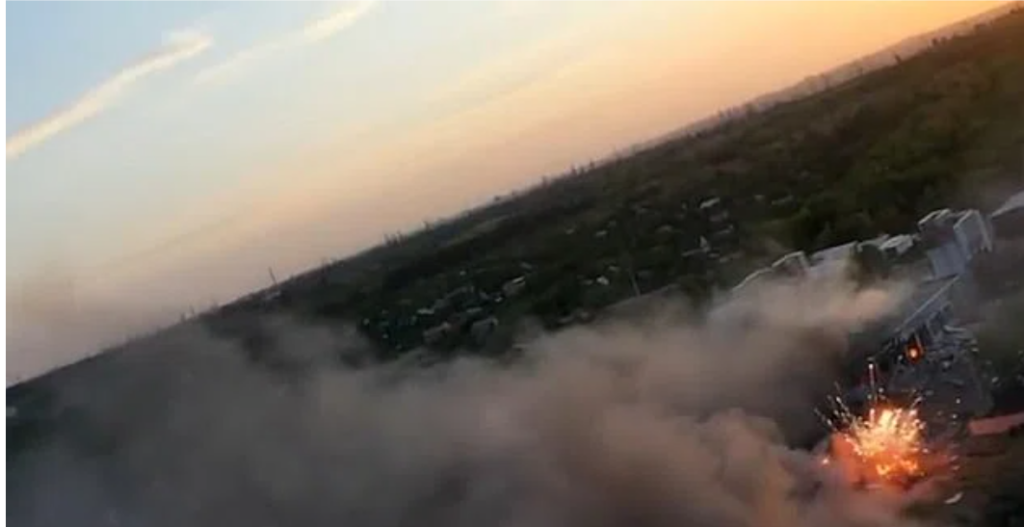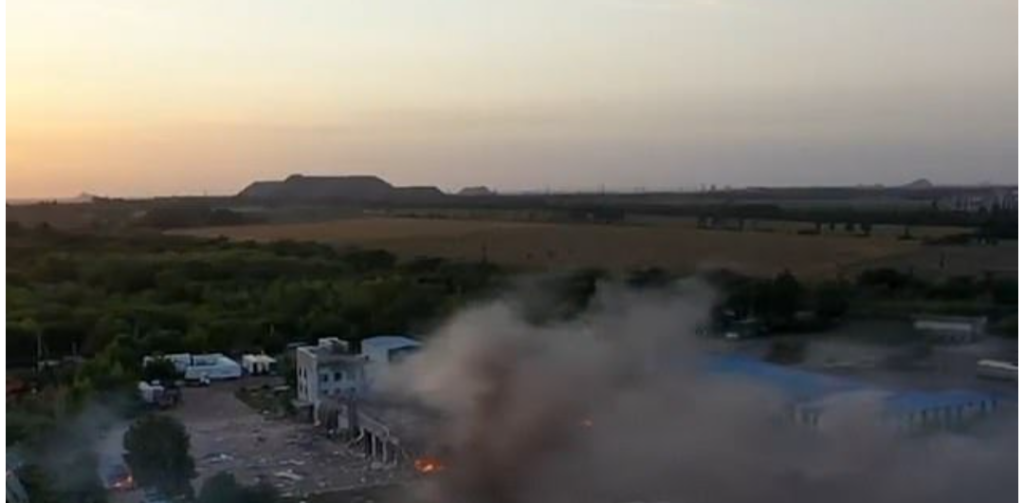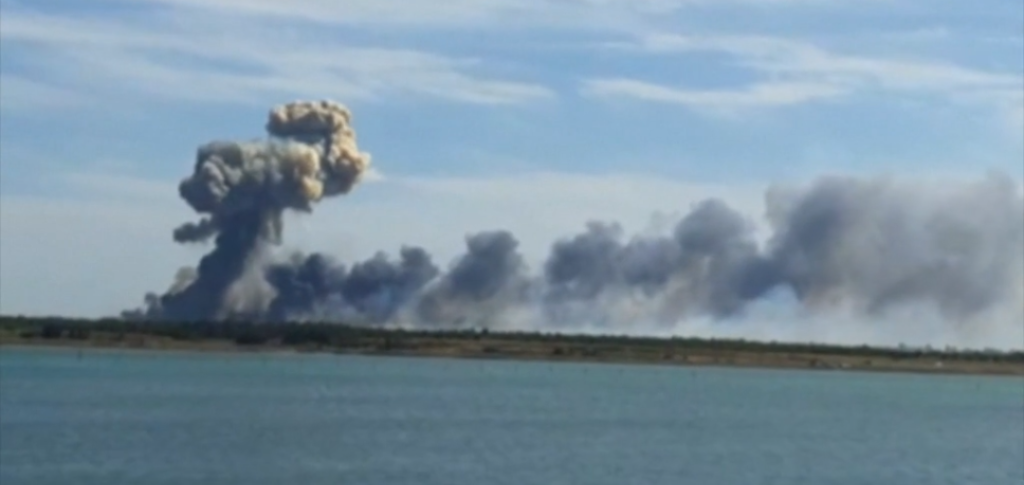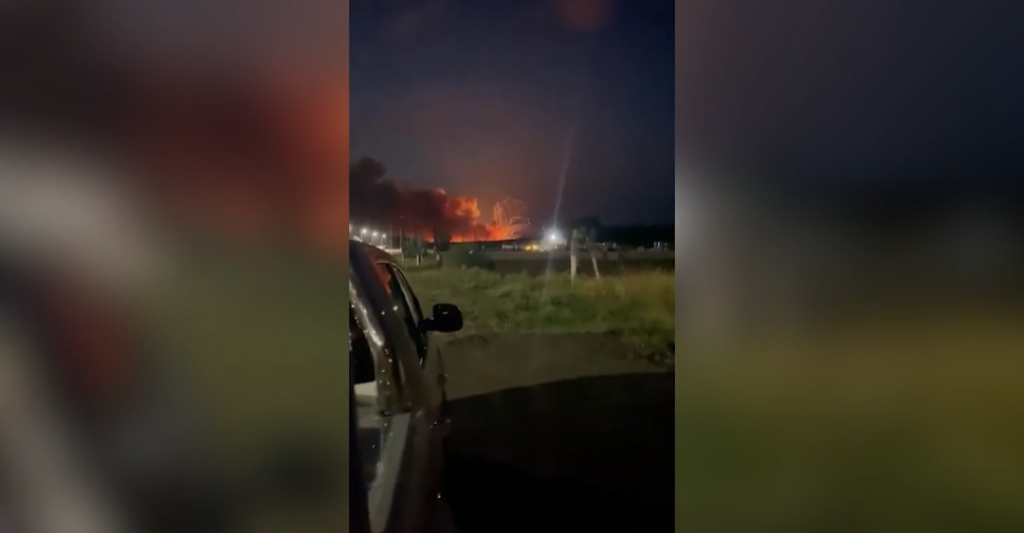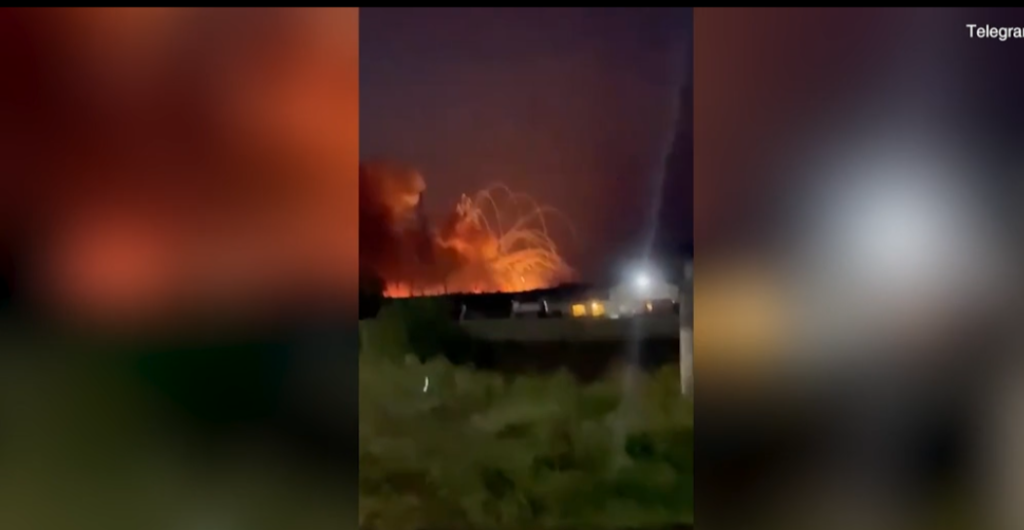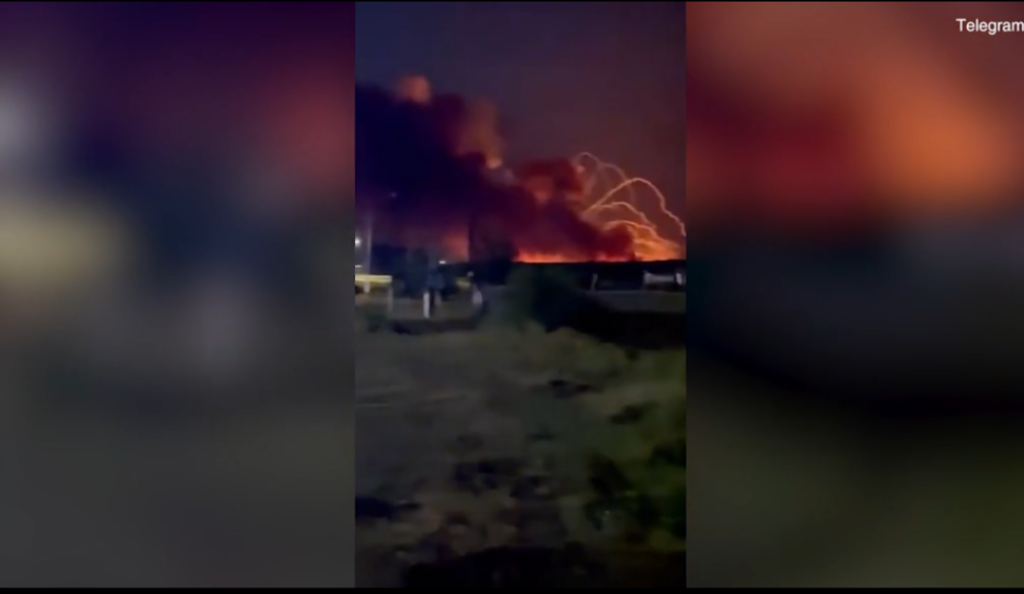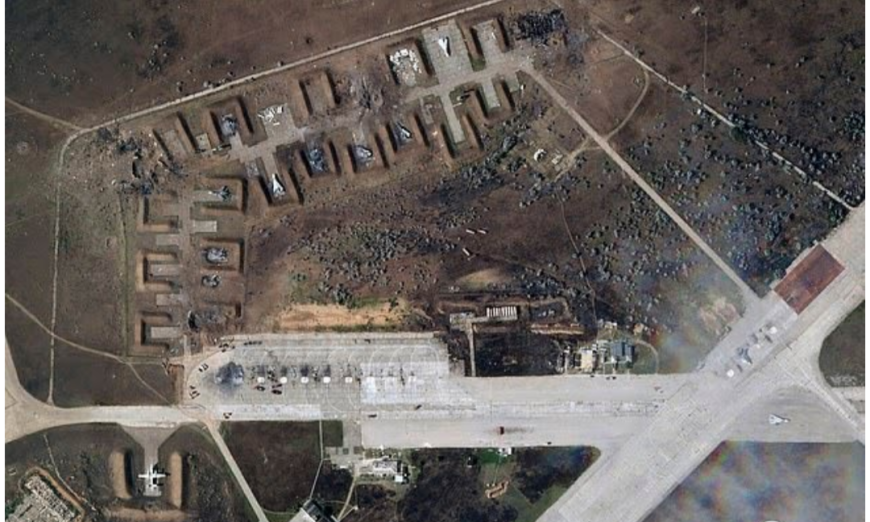Explosions at a Russian base knocked out over half the Black Sea fleet’s combat jets, crippling its warfighting ability, Western officials and intelligence say.
Recent explosions at a Russian base in occupied Crimea damaged multiple combat aircraft.
Over half Russia’s Black Sea fleet’s combat jets are knocked out, Western intel and officials said.
Ukraine did not immediately claim public responsibility for the apparent attack, but it has celebrated it.
Recent explosions widely considered to have been a Ukrainian attack at a Russian base in occupied Crimea knocked out over half of the Russian Black Sea fleet’s combat jets, Western officials have revealed to the media Friday.
Multiple blasts on August 9 at Saki Air Base — situated well-behind the front lines in eastern and southern Ukraine — caused widespread damage, destroying several Russian warplanes and buildings.
According to multiple reports from Reuters and others, Western officials said Friday that the damage has sidelined over half of Russia’s Black Sea fleet’s naval aviation jets, greatly hamstringing the combat capability of Russian President Vladimir Putin’s forces in the area.
Included in the damage are an unspecified number of both Russian Su-24 and Su-30 jets, which have been in use by the country’s air force for decades. There have been conflicting reports over how many aircraft were destroyed exactly, though satellite imagery from last week shows as many as 13 damaged and destroyed jets.
The British defense ministry said in an intelligence update last week that the jets lost only represent a small portion of Russia’s overall aircraft inventory available to support its war efforts in Ukraine. But there was an outsized impact on the Black Sea fleet.
“The fleet’s naval aviation capability is now significantly degraded,” UK intelligence said late last week. “The incident will likely prompt the Russian military to revise its threat perception. Crimea has probably been seen as a secure rear-area.”
Ukrainian intelligence reported in the aftermath that Russia relocated a number of other aircraft in Crimea to positions deeper in on the peninsula and to bases inside Russian territory.
Last week’s apparent attack on the Saki Air Base marked the first in the occupied Crimean peninsula since Russian forces illegally annexed it in 2014.
Though Ukraine did not immediately claim public responsibility for the blasts at the base, which its Air Force celebrated on social media, officials have admitted privately that it was behind the explosions. Some reports have suggested a ranged attack while others have indicated that Ukrainian special forces were involved.
Russia has, however, blamed the explosions on an accidental ammunition detonation and attempted to downplay the damage.
A series of explosions damaged two Russian airfields and destroyed an ammunition dump in Crimea, which Putin’s forces have occupied since 2014.
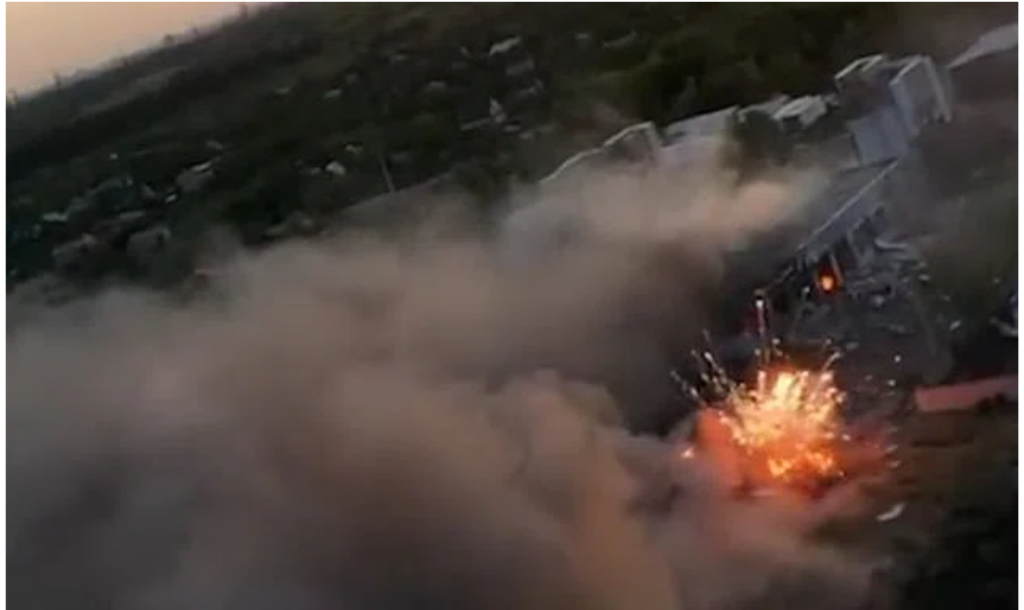
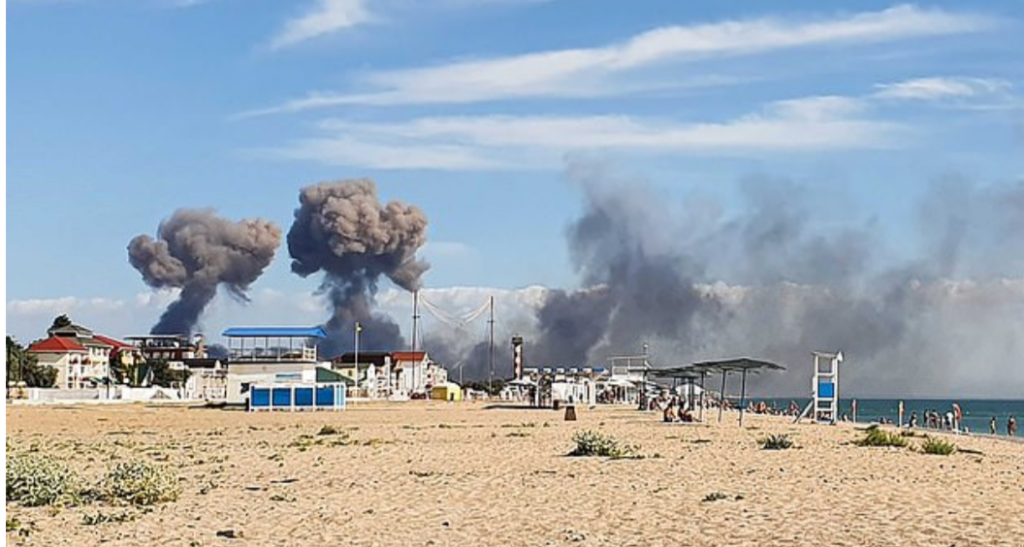
Explosions rock Donbas as Russian ammo dump goes up in flames in fresh blow to Putin’s ‘exhausted’ forces almost six months after war began.
Explosions lit up sky in Donetsk after overnight strike on Russian ammo dump
Russian state media said Ukraine hit ‘warehouses’, without linking it to military
It is just the latest arms depot to be hit, after blasts rocked bases in Crimea
Attacks have badly hurt Russia’s ability to wage artillery warfare with Putin’s ‘exhausted’ men struggling to advance six months after war began, experts say.
Explosions lit up the early morning sky over Russian-occupied Donbas this morning as yet another of Putin’s ammo dumps went up in flames.
Videos captured on the eastern outskirts of the city of Donetsk showed smoke and flames engulfing a set of badly-damaged buildings as the sun came up Monday, with multiple blasts caught on camera.
It is just the latest arms depot to go up in flames after blasts at bases across occupied Crimea that Ukraine says has badly-damaged Russia’s ability to fight.
Analysts at the Institute for the Study of War say Putin’s ‘exhausted’ forces are now struggling to make any ground and believe his invasion will soon ground to a halt.
Meanwhile Ukrainian commanders say they are confident in their ability to wear down Russia’s army and force it to retreat, as what was supposed to be a days-long ‘special military operation’ has dragged out into a nearly six-month war.
Russian state media has acknowledged the blast in Donetsk and blames Ukraine for carrying it out, but said Kyiv’s forces struck ‘warehouses’ with no mention of a link to the armed forces.
Ukraine has not acknowledged being behind the attack, but it follows a pattern of Russian arms dumps, command posts and key transport links being destroyed in order to halt Russia’s advance – and perhaps send it into reverse.
Those strikes have mainly focused on the south, in areas around the city of Kherson and across occupied Crimea.
Three bridges linking Kherson to Russian-occupied territories in the east of Ukraine have been all-but destroyed in recent weeks in what are thought to have been strikes by Kyiv’s men using HIMARS.
Blasts have also destroyed or damaged three bases in Crimea – two airfields and an ammo dump – and have also severed bridges across the wider Kherson region.
These have been blamed on Ukrainian saboteurs working behind Russian lines, because they are out of range of Kyiv’s missile forces.
Monday’s blasts took place hundreds of miles to the east, in Donetsk, where heavy fighting was reported along the frontline at the weekend.
Putin’s forces made some gains – capturing the town of Dacha to the west of Donetsk and attacking near Avdiivka – but Ukraine’s armed forces said other assaults near Izyum, Siversk and Bakhmut were turned back.
Analysts for respected US think-tank Institute for the Study of War wrote: ‘Russian forces’ momentum from territorial gains around Bakhmut and Avdiivka in late July is likely exhausted.
‘Russian attacks in eastern Ukraine are likely culminating although very small Russian advances will likely continue.
‘The Russian military has shown a continual inability to translate small tactical gains into operational successes, a failing that will likely prevent Russia from making significant territorial advances in the coming months barring major changes.’
Putin had been hoping for a quick and largely bloodless invasion when he ordered troops across Ukraine’s border on February 24, with the main goal being a precision strike on Kyiv to topple the government and install a puppet regime.
But his plans ran into immediate problems when Ukraine put up tougher-than-expected resistance, and convoys heading to Kyiv from Belarus got bogged down.
Faced with the prospect of being surrounded and forced to surrender, Russia beat a retreat from Kyiv and instead concentrated its efforts on seizing Donetsk and Luhansk regions – which together make up the Donbas.
Their efforts in the east have met with marginally more success, including the capture of Mariupol and most of Luhansk – but have still fallen far short of Putin’s aim.
Russia is also aiming to hold territory it has captured in southern Ukraine, after a break-out from Crimea early in the war captured swathes of land – including the cities of Kherson, Melitopol, and Berdyansk.
Ukraine is now attempting to wear down Russian forces to the point where holding territory becomes impossible, which Kyiv hopes will force a wholesale retreat.
That is what lies behind the attacks on bridges, railroads, ammo dumps and command posts, analysts and Ukrainian commanders told the Wall Street Journal at the weekend.
Retired Lt. Gen. Ben Hodges, a former commander of the U.S. Army in Europe, told the paper that Russia’s logistics system is ‘exhausted’ because it was not designed ‘to sustain a long conflict outside of Russia’.
Unlike most other modern militaries, Russia is heavily reliant on trains to supply the large amounts of ammunition its forces use to bulldoze through enemy lines so its troops can capture the ruins left behind.
Cutting rail lines and destroying ammo dumps near the front forces Putin’s commanders to rely on long-distance truck convoys to move ammo around, hampering its ability to fight.
Maj. Gen. Edward Dorman, the former director of logistics and engineering for U.S. Central Command, added: ‘If you can’t keep the required inflow of supplies, at some point you have to give ground.
‘Wars have been lost because of logistics.’
Natalia Humeniuk, a spokeswoman for the Ukrainian military’s Southern Command, suggested that vulnerability is at the heart of Kyiv’s plans to recapture territory seized since the start of the invasion – and as far back as the last war in 2014.
